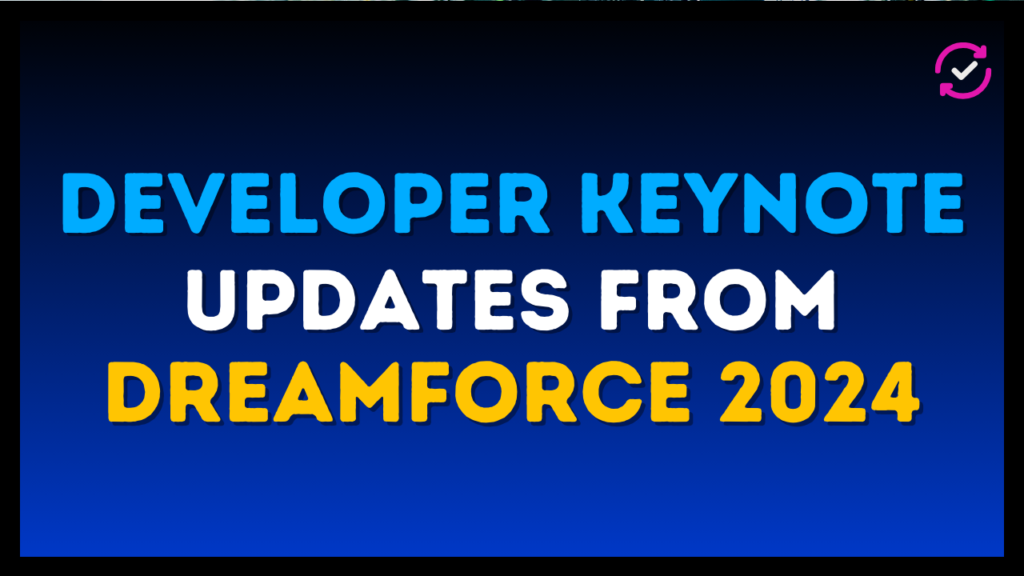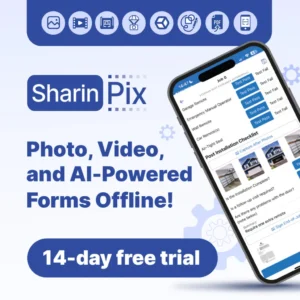The Developer Keynote Updates from Dreamforce 2024 highlighted how Salesforce unifies data, AI and development tools to empower developers to create innovative, scalable solutions. Dreamforce is Salesforce’s flagship event.
It is not just a tech conference—it’s a community celebration. It brings together thousands of developers, partners, and customers to explore the latest advancements in cloud computing, AI and business applications.
The Developer Keynote at Dreamforce 2024 highlighted Salesforce’s focus on a higher level of abstraction. By positioning the data server as the first layer of abstraction, Salesforce allows customers to concentrate on the core functionality of their applications. With servers in the cloud, upgrades become seamless.
The platform integrates essential services like CRUD operations, automation and mobile capabilities, all in one place. Plus, with three annual releases, Salesforce continues to drive innovation. On top of this foundation, users can configure and customize their own CRM applications effortlessly.
Another layer of abstraction is combining multiple data sources and presenting them as a unified system. Additionally, Salesforce introduces AI that goes beyond content generation, optimizing tasks and processes. Enter Agentforce, Salesforce’s latest product, which simplifies apps by breaking them down into actionable tasks.

Hence Salesforce Platform brings all of these together on a single platform which is Data + AI + Tools. Now let’s look what are the things highlighted at Developer Keynote Updates from Dreamforce 2024.
Data: Unifying Data for Actionable Apps
Salesforce is transforming data management by abstracting complex data, enabling developers to focus on creating applications that deliver actionable insights.
1. Data Cloud One(GA Oct 2004)
As companies grow, they often end up with customer data spread across different departments or regions in separate Salesforce orgs. Wouldn’t it be great to have a single view of all that data? That’s where Data Cloud comes in—it pulls data from various sources into one unified platform, making it easier to access and analyze.
With a Data Cloud One companion connection, these orgs, called companion orgs, can see complete customer profiles, create custom workflows using unified data, and gain valuable insights. This boosts their CRM capabilities with advanced tools, allowing businesses to optimize their processes and build tailored solutions.
2. Sub-Second Real-Time (GA Now)
This feature ensures data cloud will operate at incredible speed. Making processes nearly instantaneous, handling everything from data ingestion to activation in sub-seconds, and providing real-time insights and updates. It’s crucial for applications that require immediate data processing and response by reducing delays between stages.
3. Vector Database (GA Now)
The Data Cloud Vector Database allows businesses to use all types of data—structured (like purchase history) and unstructured (like emails or PDFs). It is used to improve AI prompts and business workflows. This eliminates the need to fine-tune Large Language Models (LLMs) separately. By combining these diverse data types, the Vector Database enhances AI, automation, and analytics across Salesforce applications.
4. Hybrid Search (GA Nov 2024)
Vector search understands context and meaning but might miss specific industry terms. Keyword search is good at finding exact matches but struggles with understanding context. To provide accurate responses using AI, you need both vector and keyword searches. In the Data Cloud hybrid search combines both approaches, using vector search for context and keyword search for precision. This helps generate more accurate and relevant information.
5. Static SOQL for DMOs(GA Now)
DMO is a Data cloud Data Model Object. Now Static SOQL is supported with DMO. This update offers a more efficient way to query large datasets using a static SQL-like syntax, reducing the complexity and improving the performance of data retrieval in Data Model Objects (DMOs).
AI: Enhancing Intelligence with Trust and Simplicity
Salesforce is simplifying the Integration of AI into its application by allowing developers to build or automate more intelligent solutions.
1. AgentForce (GA Oct 2004)
AgentForce is a new Salesforce product that integrates AI into business processes by making it simpler and more secure. It breaks complex tasks into manageable steps, enabling businesses to improve productivity and decision-making.
2. Trust Layer (GA Now)
Trusting AI with your company secrets is still a challenge. Einstein Trust Layer is a secure AI architecture built into the Salesforce Platform. It helps you to deploy your business successfully while leveraging the AI capabilities which ultimately help to grow your business. It starts with providing some prompts in your CRM application.
The prompt is the set of instructions that goes to the Large Language Model (LLM) which generates the output and sends it back to Salesforce. It has a zero data retention policy which means your data isn’t retained by third-party LLM.
3. Model Builder (GA Now)
Model Builder is part of Salesforce Einstein 1 Studio, an AI platform that helps users create custom AI models tailored to their business needs. It brings predictive and static models into the Salesforce organisation.
Salesforce’s flexible approach supports various AI models, including its own, third-party hosted models, or those from other platforms like Amazon SageMaker or Google Vertex AI. This lets businesses combine their data with different AI models to get predictions and insights tailored to their specific requirements.
4. Model API (GA Now)
The Models API offers Apex classes and REST endpoints that help your application connect to large language models (LLMs) from Salesforce partners like Anthropic, Google, and OpenAI. You can use any model available in Einstein Studio that is supported by Salesforce.
In simpler terms, the Models API makes it easy to use advanced language models from well-known companies in your Salesforce applications. it helps you to generate text, submit your feedback and store it which later on can be used to analyze the quality of your responses.
5. Prompt Builder (GA Now)
The Prompt Builder in Salesforce is a tool that helps users create and customize prompts for large language models (LLMs). It allows you to define the instructions or questions you want to send to the model to generate specific responses. The main factor is that we can connect our Model to generate the response as different model generates different repsonses.
Are you preparing for the Salesforce AI Associate Certification? Check out the free practice set here.
Developer Tools: Enhancing Productivity and Innovation
Salesforce is continually expanding its suite of developer tools to support faster, more efficient development workflows.
Agentforce for Developers (GA Now)
It is previously known as Einstein for Developers. Agentforce for Developers is a set of AI tools that help you write Salesforce code, like Apex and LWC, more easily. Whether you’re creating new features or improving existing ones, these tools help you quickly generate high-quality code that follows best practices.
Powered by Salesforce’s own AI models, Agentforce makes complex tasks simpler, automates repetitive work, and guides you through building applications faster. Additionally, We can use it to perform the tasks like explaining, and documenting the code.
To engage with this we have to click the Einstein icon right below the Git icon on our VS Code Activity Bar.
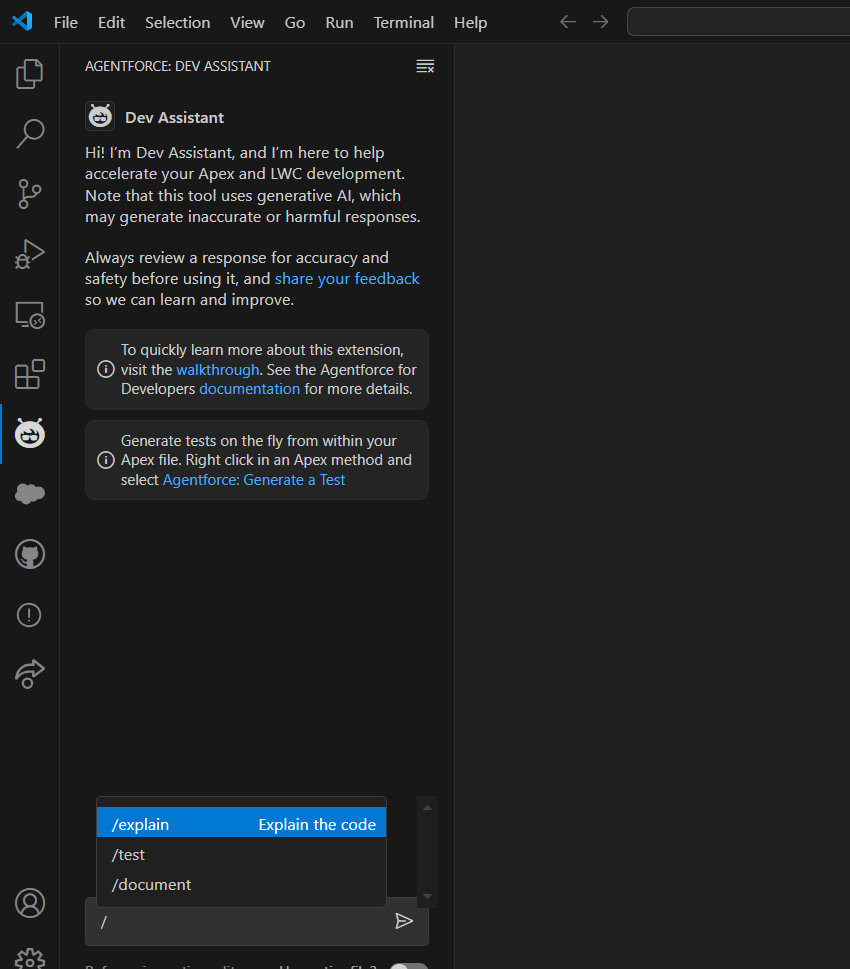
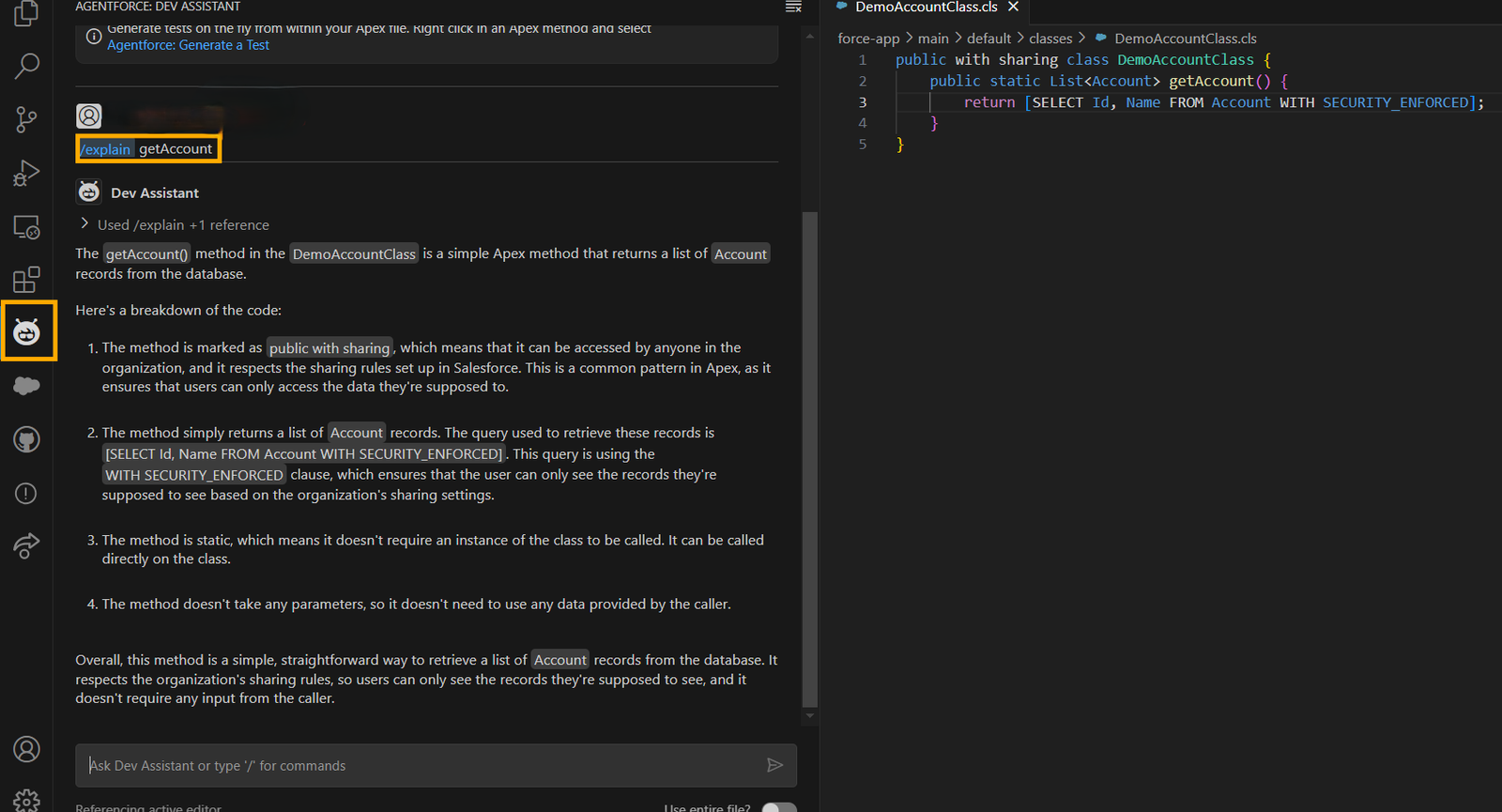
LWC Local Development (Beta)
LWC Local Development enables developers to test and debug Lightning Web Components locally, providing a faster feedback loop. Improves productivity by allowing developers to see changes in real-time before deploying to the cloud.
However, we have to first install the plugin through the command “sfdx plugins:install @salesforce/lwc-dev-server“. It then installs all the dependencies. When we open our terminal it displays us the 3 below options.


When we click on this Preview Component Locally. It will open us the below options where we can choose how we want to preview our component.
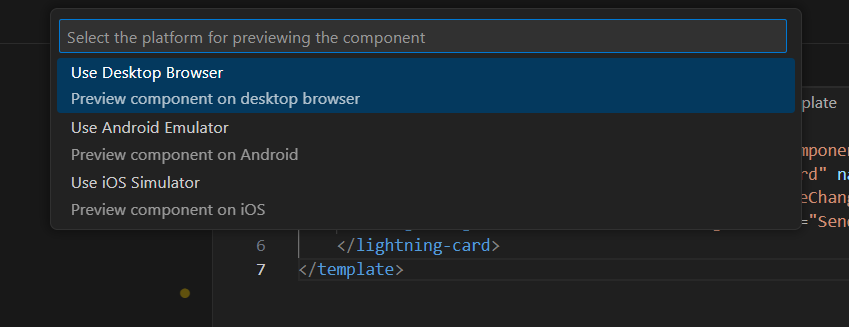
It doesn’t support @AuraEnabled Apex methods, Custom CSS properties, lwc:if, lwc:elseif, and lwc:else directives.
Scale Centre (GA Now)
It helps us to quickly assess our organisational performance so that we can act earlier in our development cycle. It is now generally available.
ApexGuru (GA Now)
ApexGuru leverages AI to analyze Apex code and provide recommendations for performance optimization. It helps developers write more efficient, maintainable code and enhances overall application performance. ApexGuru also gives us the specific information about our code which detects the concerns or violates the governor limit and helps us to prevent CPU limits.
FAQs
1. What is a Data Cloud?
Data Cloud unifies data from various sources, allowing for real-time data access and analysis, enabling businesses to make informed decisions quickly.
2. What are the modules does LWC Local Dev doesn’t support?
LWC Local Development doesn’t support @salesforce/navigation, lightning/messageService, @salesforce/apexContinuation. It’s just for preview, not possible to interact with it.
3. What is GA, Pilot, and Beta?
They are the different stages of the salesforce feature release lifecycle.
- GA (Generally Available): A feature that has passed the Pilot and Beta testing phases and is considered fully functional and supported. GA features are officially released and do not have Pilot or Beta labels or warnings.
- Beta: The beta phase is an intermediate stage where the feature is made available to a larger audience, but it’s still considered in development and may not be fully stable. In this, the feature is available to all the customers but requires extra enabling in setup.
- Pilot: It is the initial stage where the feature is introduced to a limited set of customers. It may be used to gather feedback.
Conclusion
The Developer Keynote updates from Dreamforce 2024 highlighted Salesforce’s dedication to supporting developers by combining Data, AI and enhanced Developer Tools. By simplifying complex systems and providing powerful, easy-to-use tools, Salesforce is helping developers focus on creating innovative solutions that drive business success.
In simpler terms, Salesforce is making it easier for developers to build impactful solutions by offering tools that reduce complexity and streamline the development process. It helps developers to spend more time on innovation and less on managing complicated systems.


